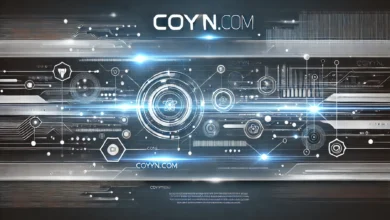Understanding the “Cloudlin Down Eth1” Issue: Causes, Solutions, and Best Practices

The networking world is rife with complex challenges that can trip up even seasoned IT professionals. One such common issue is seeing the “Cloudlin Down Eth1” error message. This issue can cause significant concern, especially for administrators managing cloud-based environments or virtual machines. But what does this message mean, and how can you effectively troubleshoot it? Here, we’ll break down everything you need to know about this problem, its potential causes, solutions, and preventative measures.
1. What Does “Cloudlin Down Eth1” Mean?
Before diving into the specifics, let’s clarify what this error implies. The term “Cloudlin Down Eth1” typically signals that there is a connectivity issue or that the network interface named eth1 in a cloud or virtual environment has gone offline. In simpler terms, it means that one of your network connections, specifically eth1, is down or inactive.
The eth1 designation refers to a network interface, which could be a physical or virtual network port depending on your infrastructure. When an interface is labeled as “down,” it means it is not transmitting or receiving data packets, disrupting network communication. For cloud environments where uptime is critical, this issue can lead to downtime, lost productivity, and potential service outages.
Why Is This Important?
Understanding that eth1 is down is essential for pinpointing connectivity issues and ensuring seamless operation in cloud-based systems. A downed network interface can lead to disrupted services, failed backups, interrupted data transfers, and delayed responses from critical applications.
2. Common Causes of the “Cloudlin Down Eth1” Issue
Several underlying reasons can lead to the “Cloudlin Down Eth1” issue. Here are the most common causes that network administrators should consider:
a. Configuration Errors
One of the most prevalent reasons for seeing the “Cloudlin Down Eth1” error is incorrect network configuration. This could occur due to misconfigured network settings in the system files or errors in the cloud service provider’s setup. If the configuration files defining eth1 are corrupted or miswritten, the interface may not function correctly.
b. Driver or Firmware Issues
Outdated or incompatible drivers for the network interface card (NIC) can lead to connectivity problems. If the eth1 interface is tied to specific hardware, ensuring that the firmware and drivers are up to date is critical. An outdated driver can cause erratic behavior or make the system fail to recognize the interface altogether.
c. Resource Allocation Problems
Virtual machines and cloud environments rely on shared physical resources. If there’s an issue with how these resources are allocated, such as insufficient bandwidth or hardware failures, it can result in interfaces going down. Resource contention can occur when multiple virtual instances attempt to use the same physical NIC, causing eth1 to drop.
3. Steps to Troubleshoot “Cloudlin Down Eth1”
When faced with the “Cloudlin Down Eth1” issue, a structured troubleshooting approach is vital. Here’s a step-by-step guide to diagnosing and fixing the problem:
a. Check Network Interface Status
The first step is to verify whether the eth1 interface is truly down. This can be done using standard command-line tools:
ifconfig eth1or:
ip link show eth1These commands will display the current status of eth1. If it is marked as “DOWN,” further investigation is necessary.
b. Review Configuration Files
For Linux-based systems, network configuration files typically reside in /etc/network/interfaces or /etc/sysconfig/network-scripts/. Reviewing these files and ensuring the eth1 interface is properly defined can help identify any misconfigurations.
Example configuration snippet:
auto eth1
iface eth1 inet static
address 192.168.1.100
netmask 255.255.255.0
gateway 192.168.1.1Ensure that the settings are correct and match the intended network design.
c. Restart the Network Service
Sometimes, restarting the network service can resolve minor issues. Use the following commands to restart network services:
sudo systemctl restart networkingor, for older systems:
sudo service network restartThis step often helps in reinitializing the network interfaces and can bring eth1 back online.
4. Solutions to Address “Cloudlin Down Eth1”
Once you’ve identified the root cause, applying the right solution is the next step. Here’s how to handle different scenarios:
a. Fixing Configuration Errors
If you discovered configuration errors, correcting them in the appropriate files and restarting the network service should resolve the issue. Ensure that any changes made align with the network topology and that IP addresses, netmasks, and gateways are correctly assigned.
b. Updating or Reinstalling Drivers
If the issue stems from a driver problem, updating or reinstalling the network driver can help. For Linux systems, the following command can be used to check for updates:
sudo apt update && sudo apt upgradeFor more specific driver updates, visit the NIC manufacturer’s website or use package managers to install updated driver packages.
c. Resource Management and Allocation
In virtual environments, resource allocation may need adjustment. Check with your cloud provider’s dashboard or management console to ensure that the virtual machine hosting eth1 has adequate resources. Consider reallocating or increasing the bandwidth to avoid contention issues.
5. Best Practices to Prevent “Cloudlin Down Eth1”
Prevention is key to minimizing disruptions caused by network issues. Here are some best practices to keep eth1 and other network interfaces running smoothly:
a. Regularly Update System and Drivers
Maintaining up-to-date firmware and driver versions can help prevent compatibility issues that cause network interfaces to go down. Schedule routine updates and patching to keep your systems current.
b. Implement Robust Monitoring
Use network monitoring tools to track the status of interfaces in real-time. Applications like Nagios, Zabbix, or Prometheus can send alerts when interfaces such as eth1 go down, allowing for faster response times.
c. Backup Configurations
Having a backup of your network configurations can save time when troubleshooting. Before making any changes to configuration files, create backups using simple commands:
cp /etc/network/interfaces /etc/network/interfaces.bakThis step ensures that if an error occurs during the modification process, you can easily restore the previous configuration.
6. Conclusion
The “Cloudlin Down Eth1” error can be an inconvenience, but understanding its potential causes and knowing how to troubleshoot it effectively can prevent significant downtime and disruptions. By taking the time to verify configurations, keep drivers updated, and implement preventive measures, you can maintain a robust and reliable network environment. Remember, routine maintenance and proactive monitoring go a long way in ensuring your network interfaces stay operational and your services remain uninterrupted.
You may also read.
Mega-Personal.net Health Archives




